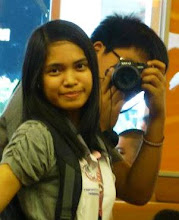What is APE? APE is short for Advanced Placement Examination. Actually, this is a repost of one of my posts last year which I deleted intentionally for the purpose of starting all over again. I thought of reposting this because it boosted traffic to my blog. I am not really conscious of blog traffic. I just enjoy seeing views increasing every time I log on to Blogger.
Going back, APE is an exam given to UPCAT passers with an
average grade of 90 and above in the four UPCAT subtests. If the APE qualifier passes
the exam, he can earn advanced credit units in the basic courses and accelerate
completion of his curriculum. You can take the said exam only when you get an invitation
letter from the campus you qualified for.
Adrian received the letter from UP Los Baños, his second choice of campus where he passed, and grabbed the
opportunity. He paid P700: P200 for the application fee and P500 for the
examination fee of five subjects (P100 per subject). You can choose as many
subjects as you can, considering the subjects are in your curriculum. According
to the post I have read on a forum, the exam is the final exam of the subject
so if you pass it, it means you can get a grade of 1.00 that is why you are exempted from taking it after passing. If ever you pass the
subject and decide not to take it, no grade will be indicated – just Passed.
Anyway, the exam was conducted on April 11 – 13. He took
Humanities 1, Nat Sci 1, History 1, History 2 and Math 17. I wish he could pass
any of the subjects he took. I heard only a few pass and there are times that
no one passes in a subject. In the previous years, only one passed Math 60, two
passed Biology 1, ten passed Math 14 and thirty seven passed Math 17 out of
hundreds of takers and according to a professor, no one has passed Comm 1 yet.
He said he is not confident that he will pass any because he
had a hard time answering the questions. The exam was harder than he expected.
In Humanities 1, there were five essay questions of twenty points
each which covered what exactly was in the primer: literature, man and society
and literary discourse as an imaginative expression of human experience and
social values.
In Nat Sci 1, there were multiple choice, true or false and
problem solving. Fundamentals, principles and theories of physics and chemistry
covered the problem solving part. He did not know that it was necessary to
bring a calculator in this subject so he was not able to use one and did the
solving manually.
In History 1 (Philippine History) and History 2 (World
History), there were multiple choice (a lot of questions appeared about
Buddhism, Islam and the Muslim, Japan and China), identification (identify what
religion is being described in the statement), fill in the blanks, sequence
arrangement (there were four sets and at the end of each set, they were asked
to explain the whole thing) and essay. For the essay part of History 1, they
were asked to explain the history narrated and answer the question, if there is
any. Some of the questions that were asked were if EDSA was really a revolution
and the military that has something to do with the Philippines and the USA. On
the other hand, the essay part of History 2 was only to explain Europe – being
the center of the world.
In Math 17, the multiple choice mostly covered the concepts.
There was also problem solving (seven problems or more) where you have to show
the complete solution of your answer to the word problem.
He thought the exam would be purely a multiple-choice type
so he did not prepare much for it. He regretted after and said that he should
have studied more. Results will be posted in the campus two weeks after the
exam was administered. Although he is not expecting to pass any, I still hope
that he will do.


0 comments:
Post a Comment